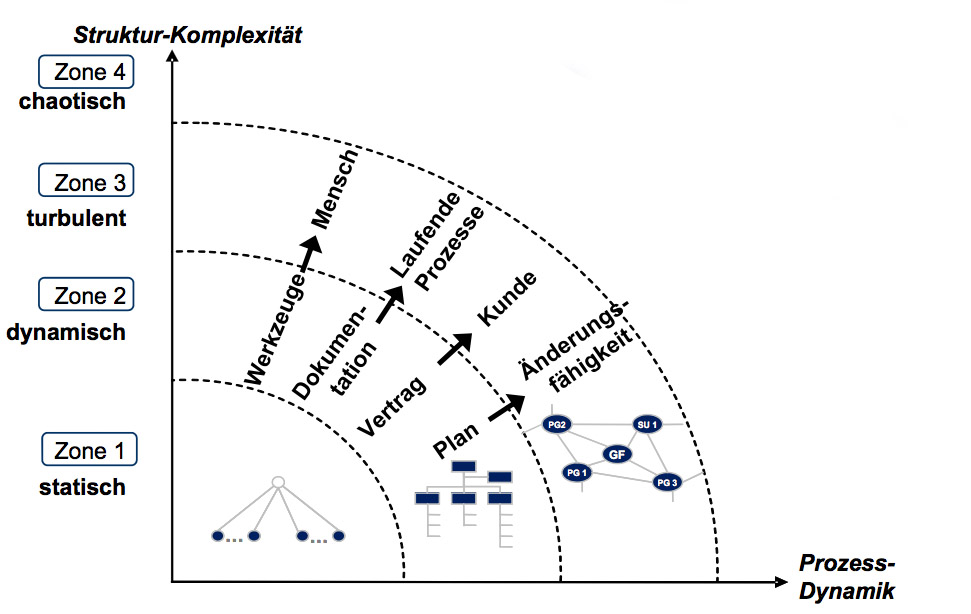Dynaxity describes an artificial word that is made up of the terms dynamics and complexity. Let’s look at the Duden so complexity stands for “multi-layered and that in one another of many characteristics”. If we turn back a little, we find the Duden under dynamics: “Force directed towards change”. The aim of the made-up word is to combine both of these terms.
The term was apparently first mentioned in publications in the 1980s and has been revisited from time to time since then. The background to the term is the research field: Management in complex and dynamic systems.
The 4 zones of Dynaxity
The picture shows the 4 zones of Dynaxity. Zone 1 (static) describes simple, fixed rules and the same structures. So one could speak of a small business that has been secured for generations.
Zone 2 (dynamic) describes the classic company according to some literature. Growth and changes in customer requirements are the order of the day here. There are uniform processes and structures as well as a basic controllability of the company. It is noticeable that in some publications the customer is mentioned as a “disruptive factor” in this phase, as these organizations often work in a rather static manner. However, this is not exactly proven.
Zone 3 (turbulent) arises with increasing dynaxity. Uniform processes and rigid structures are no longer effective here and employees are required to help shape it. This zone is described as a living system that should be dominated by self-organization. In addition, “feedback effects” are found in some publications. That is, solving one problem leads to several new problems.
Zone 4 (chaotic) is basically no longer controllable. Civil wars or natural disasters are cited as examples. So there is a high level of complexity and dynamism here.

Dynaxity and agility
The following figure shows again the 4 zones and tools as well as processes that dominate each zone. It is clear that Zone 1 has a typical hierarchy and Zone 2 actually scales this with contracts and plans. Zone 3 forgets all of these methods and uses the principles of agility. According to the authors who used it in 1980, Zone 3 was derived from the Agile Manifesto. So the term goes hand in hand with agility.
Overall, the term fits very well, even if the word itself is not exactly easy to pronounce. It also summarizes the two triggers of my research, namely dynamics and complexity. Overall, I find it an exciting term and I will certainly pick it up one time or the other.



